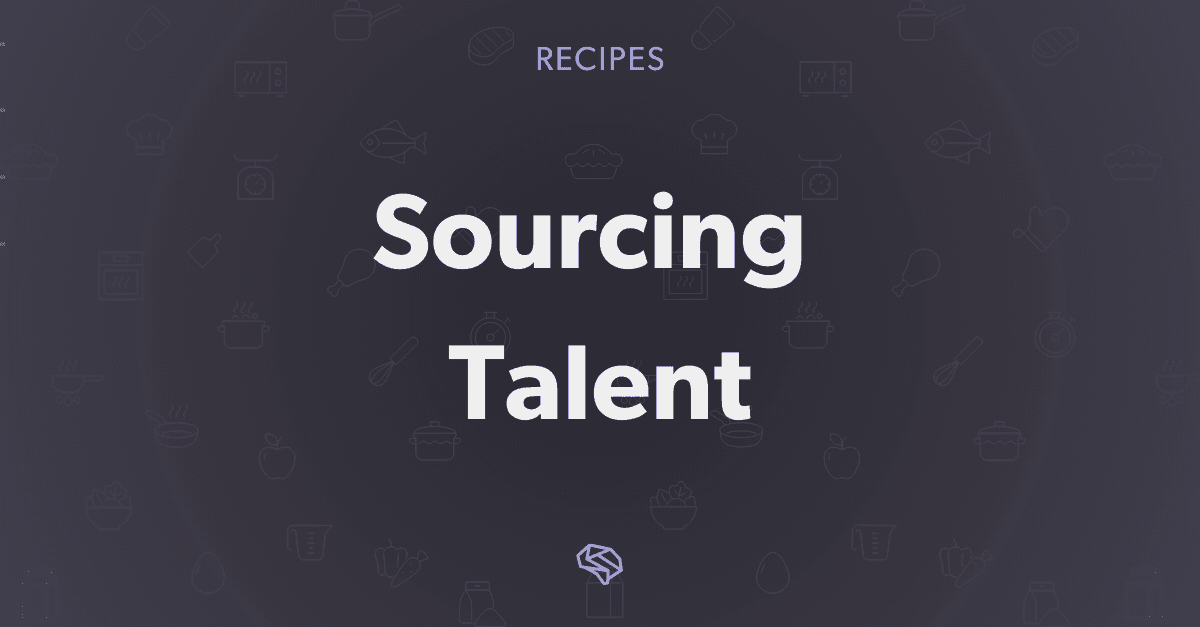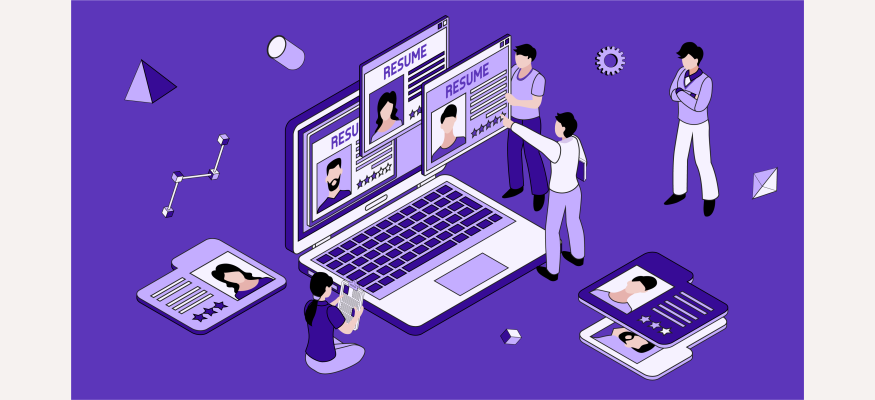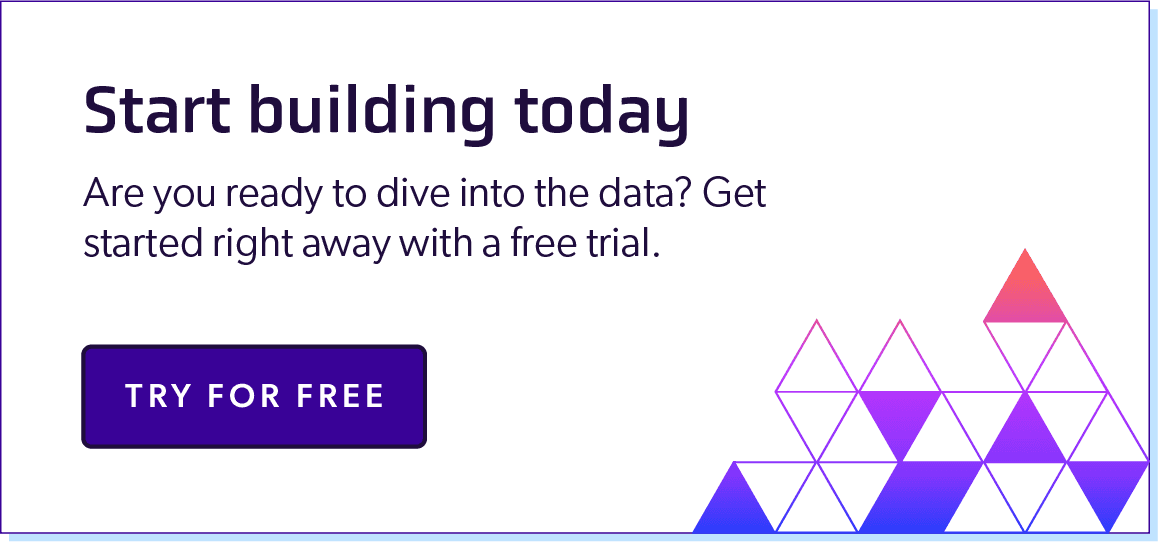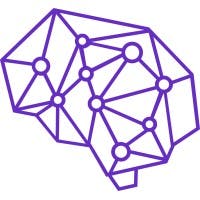
Using Predictive Analytics to Supercharge Your Recruitment Process
January 27, 2022
Table Of Contents
Wouldn't it be great if you could simply look into a crystal ball to find a candidate that is perfect for your open position?
While fortune-telling is still beyond the realm of possibility, innovators are creating tools that use predictive analytics and big data to predict the success of future hiring activities.

Here’s the most important things you need to know about using predictive analytics for recruitment.
What Is Predictive Analytics?
Predictive analytics is the process of using historical data to make predictions about future events.
This methodology entails collecting and analyzing data both within your organization and from third parties to identify factors that positively or negatively impact the likelihood of achieving the desired outcome (increasing quantity and/or quality of new hires).
Although highly usable in many use cases such as fraud detection to supply chain management, predictive analytics can be used to streamline processes and improve data-driven decision making.
In the recruiting world, predictive analytics can help drastically improve the speed and effectiveness of your hiring process by identifying candidate attributes that correlate with high job performance and low churn. It can also help you better assess the risks associated with hiring a particular candidate.
Read More: How to Utilize Data in the Recruitment Process to Find & Hire the Best Candidates
How Large Organizations Leverage the Power of Predictive Analytics to Improve Their Recruitment Process
When it comes to talent acquisition, predictive analytics helps organizations streamline their entire hiring process in multiple ways:
1. Predict and Prevent Employee Turnover
Many organizations fail by consistently going above and beyond to find, attract, and hire top performers, only to watch them leave their organization within a few months.
Employee turnover is a huge expense for businesses, costing an estimated $1.8 trillion in the United States each year. In addition to financial costs, employee turnover is detrimental to company culture and productivity.
That's why lowering employee churn is top priority for every HR leader.
Using predictive analytics, HR professionals can better understand candidate characteristics that weren’t a fit, practices that didn’t attract best fits, why employees leave, and what they can do to prevent loss. This reduces dependency on a steady supply of new talent and frees recruiters up to focus on improving retention and fostering a positive culture.
2. Identify Candidates with Best Job Fit
With what many are calling “The Great Resignation” in full swing, recruiting top talent is seen as the top concern for many HR leaders in 2021.
Knowing how to convince the best candidates to join your company is essential. To make it to that stage, you need to know how to quickly and accurately identify people in the sea of seemingly endless opportunities.
Many companies use predictive hiring practices to understand characteristics that correlate with a strong job fit. From education background to years of experience, you can put together a data-driven ideal candidate profile to zero in on prospects that possess desired skills, traits, and competencies.
This enables human resource professionals to elevate the quality of their talent pool across the board while saving countless hours on interacting with candidates that are not a fit.
3. Expand Talent Pipelines with Better Talent Sourcing
The source of your candidates (such as LinkedIn, Indeed, Glassdoor, employee referral, etc.) has a tremendous impact on the overall success of your recruiting campaigns.
Predictive analytics can improve your talent sourcing efforts by providing data-driven insights into where you can find the best candidates.
These insights help you understand which sourcing channels have the highest ROI, allowing you to generate more candidates for every dollar spent.
Read More: 5 Key Talent Acquisition Strategies for Hiring Better Candidates
4. Optimize Your the Entire Recruitment Funnel
Finally, predictive analytics is a powerful tool to help HR professionals and business leaders understand how they can adjust the hiring process to optimize the recruitment funnel.
Instead of relying on your gut feeling, predictive analytics provides accurate answers to the most pressing questions that can help streamline processes on a granular level.
This removes the guesswork from the hiring process and enables you to make data-driven decisions.
Implementing Predictive Analytics in Recruitment

By understanding how different variables influence the hiring process, you can better prioritize your efforts to attract the best-performing candidates in less time.
Here are the steps you need to take to get started with predictive analytics.
1. Choose Your Tech Stack & KPIs
The first step is choosing the technology stack for predictive analytics. This includes the software and tools you'll need to collect, store, and analyze data.
Ideally, you want your tech stack to be compatible with your ATS or HRIS.
Once there, you'll need to identify the key performance indicators (KPIs) that you want to monitor. If you can't measure it, you can't improve it.
Your KPIs are the metrics you will use to assess and monitor the effectiveness of your recruitment efforts.
They can vary based on your goals, but some of the most common recruitment metrics include:
Time to fill
First-year turnover rate
Applicant dropout rate
Training expense per employee
2. Collect Data
Predictive analytics needs a massive amount of data to ensure your model is robust enough to make accurate predictions.
From time-to-hire to average training costs, you need to leverage internally collected records from both your HRIS and external sources, such as B2B data vendors, to collect high-quality, accurate candidate data at scale.
3. Train the Model & Perform Predictions
Now that you have collected the relevant data, it's time to train your model using this data to determine which characteristics are most important for each position in your organization.You should also test the predictive model to gauge how accurately it identifies critical factors of a successful hire, such as how likely they are to be offered a job, accept a job offer, practice brand loyalty, or recommend the company after they leave.
As time goes by, your predictive model will become increasingly more reliable, drastically improving your recruiting process.
4. Act on Insights
Use the insights gleaned from predictive analytics to improve your recruitment process. This includes changing how you source talent, screen candidates, and evaluate their potential for success in a role.
Predictive analytics deepens your understanding into how various variables influence your recruitment process and retention rates.
5. Track Your Progress
Tracking and measuring your success is the best way to ensure that you're making the most of predictive analytics.
Make sure to keep tabs on how many candidates you are sourcing, how long it takes to fill a role, and new hire performance to help your model get more robust and accurate.
Implementing Superior Data for Predictive Analytics
Companies transforming their recruitment process can incorporate predictive analytics to make better hiring decisions while saving time, money, and resources. There is no crystal ball to tell you what the future holds, but you can get the next best thing by leveraging the right data, all while maintaining compliance.
Are you actively looking for a data provider? Reach out to our team today to schedule a free consultation.
Like what you read? Scroll down and subscribe to our newsletter to receive monthly updates with our latest content.

